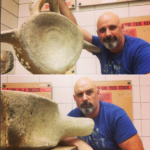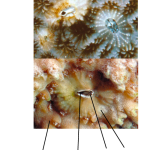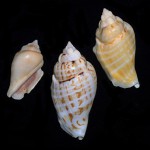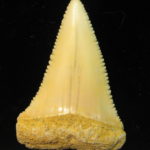It’s been eight days since Miriam posted at Double XX
This Wired piece on the 10 Worst Evolutionary Designs also made me want to smash some test tubes. It’s a stunningly inane list of animal adaptations that the author thinks are weird, uncontaminated by even the most basic knowledge of evolution.
And the eight days since reading the Wired piece, I have yet to become less irritated by it. Miriam goes on to state at least one problem…
It isn’t cool enough that a cow-like mammal has evolved into a denizen of the open sea? It isn’t neat that dolphins have evolved amazing echolocation, and that humpback whales use their air-breathing abilities to hunt? (Not to mention that only cetaceans—whales and dolphins—have blowholes. Other sea mammals, like seals and manatees, just stick their noses in the air.) Evolution is all about using the tools at hand, and if something works it’s good enough. Whales can’t evolve gills out of nothing, but they can move their nostril to the back of their head and be successful. Kangaroos can’t suddenly evolve a placenta, but being a marsupial works fine.
So as expressed by Miriam the post misses key concepts in evolutionary biology
- As Miriam states, future evolution is constrained by the past. Once an organism starts down a genetic road, it can always veer off and take a slightly different direction, but don’t expect to make it to Tokyo on the road to Tulsa.
- Not all features of an organism are adaptive. Some features are hitchhikers, remnants of the past no longer needed.
- One cannot examine singular features in isolation. An organism should be examined in totality where organismal features represent a balance of environmental constraints. For example, evolutionary miniaturization of organisms often results in loss of organs or organ systems. Instead of saying “Gee is sure is stupid that that fish has no circulatory system”, one should be in awe that organism can lose an entire organ system, question why the organism would need to become small in the first place, and contemplate the evolutionary marvel of solving this problem by organ loss.
- On the same line of thought as the above, features themselves can represent a balance of selective pressures. Back to organismal size again, my personal forte, size can represent a balance of life history constraints, metabolic constraints, space availability, predator/prey relationships, and energetics (food foraging area, fasting potential, food availability). Each of these may select for opposing sizes and the eventual size represents one solution to a complex evolutionary equation.
- Value judging an organism’s features is ridiculous in itself. I personally find that “A few shark species have live births (instead of laying eggs). The Jaws juniors grow teeth in the womb. The first sibling or two to mature sometimes eat their siblings in utero.” to be an excellent, fascinating, and brilliant example of how to both reduce sibling rivalry for resources but increase your own energy consumption prebirth!
Share the post "Worst Evolutionary Designs? No! Brilliant Solutions to the Complexity of Nature and Constraints"






The hyena’s clitoris (mentioned in Miriam’s piece) was the subject of my favourite ever essay by Stephen Jay Gould. A great example of how ‘adaptations’ aren’t always what they seem.
I thought the wired piece was funny. Granted, I would have included a paragraph that stated that you can’t talk about “good”, “bad” or “design” when it comes to nature, but i though it was genuinely geeky fun not meant to undermine evolution…
I was really surprised to see the blowhole in that list, since it’s such a fascinating structure, but come on, i would much rather be a cute kitten than a female hiena….
Wait, is there really a fish without a circulatory system? What is it?